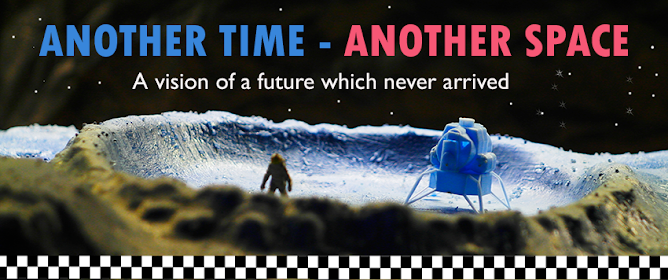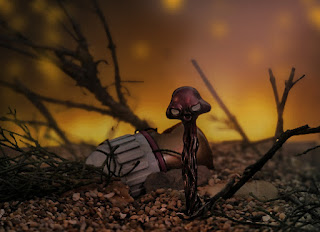The spectre of the Red Planet has haunted me from a very early age, enchanting me with visions of mysterious Martians populating the remote world. Although the Moon was always clearly documented and mapped, Mars always appeared ambiguous and occulted by distance and speculation.
Schiaparelli's early attempts at mapping the surface in the late 19th century began a school of thought which suggested that Mars was teeming with life, both vegetative and intelligent, as observers seemed to see darker areas of the surface change with seasonal regularity, giving rise to the idea that Mars has lush plains of grasses. The straight lines which he saw, he described as 'canali' which meant gulf or canyon, but the name became synonymous with the traditional waterway and speculation on purposeful engineering on the surface began to take hold.
American astronomer Percival Lowell claimed to have confirmed the existence of these 'canals' on Mars and spent considerable time mapping and documenting his sightings. Lowell subsequently came under considerable criticism for his theories, but the Lowell maps and observations were used as the basis of modern maps until 1962 and the canal theory was only finally disproved when Mariner finally took detailed photographs of the barren surface two years later.
As a boy, I kept a scrapbook of snippets relating to the space race and once found an old newspaper with the headline showing the memorable mission some years earlier. As I was only about 6 or 7 at the time, I took great delight in colouring in the newsprint photo with a red crayon!
Today Mars has been inspected, mapped, drilled and sampled by probes, orbiters and rovers and is close to finally revealing its secrets, when samples are finally returned from the Perseverance rover mission. Just this month, the president elect of the United States announced his intention to restart the Mars race and put an american on Mars within the next decade.
However exciting the plans and the cascade of new images being beamed back from the current probes, showing acres of barren rust coloured rock, there is something much more attractive about the innate mystery of the red planet, as seen through the eyes of the early visionaries, who speculated on the possibility of life beyond Earth.
One fine example of this vision, executed in beautifully intricate paintings is the 1964 book, simply titled 'Mars' by Robert Richardson and illustrated by the great Chesley Bonestell.
Bonestell was the go-to astronomical artist from the 1950's onwards and is responsible for some of the most breathtaking illustrations of the planets and the proposed space missions.
Richardson's text is full of complex mathmatical data and theories, but is still reliant on the observations from the larger telescopes such as Lick and Flagstaff for the maps and photographs of the martian surface. The lack of concrete information about the planet - which would be provided very shortly after its publication, when the Mariner probe would arrive, is offset by the wonderfully evocative paintings from Bonestell.
The journey to Mars would be carried out by ion powered ships, slowly accelerating by virtue of the electrically generated thrust. Ion engined craft would only be perfected decades later and put to use in probes such as New Horizons and Psyche.

Clearly, some of the information is entirely incorrect and speculative, but the beautifully frosted mountains being explored by a diminuitive rover and the sun baked terrain really capture the mood.
The book covers all aspects of a projected mission and goes into considerable detail about the practicalities of achieving the objectives, as well as suggesting what conditions the astronauts may encounter on arrival. Richardson is very careful to not entirely debunk Lowells suggestions about canals and intelligent life, but his scientific arguments are solid and well documented.

Towards the end of the volume is a very early illustration of the Voyager Probe, which was initially intended as a Mars landing mission in the late sixties and what would have been an updated Mariner craft. The project would ultimately see fruition some decades, as the Viking programme.
The endpapers for the book show identical monochrome illustrations of the main spacecraft undergoing essential repairs, prior to landing.



















